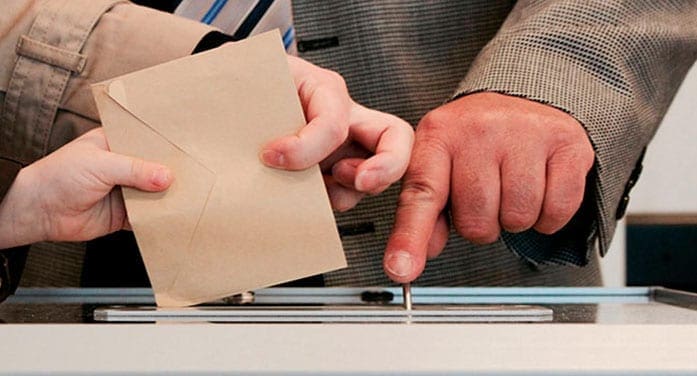Changes in leadership rarely lead to electoral victory. Here’s what history reveals about the Liberal Party’s future

For interview requests, click here
Over the past 60 years, only four leadership contests have directly picked a new prime minister. And as befits its “natural governing party” status, three of them have involved the Liberals.
The first contest was in 1968, culminating in Ottawa on Saturday, April 6. It was a long day. Voting stretched over seven hours, partly due to convention delegates being unfamiliar with handling the computer punch cards used for voting.
Nine candidates made it to the first ballot, seven of whom were current cabinet ministers. An additional cabinet heavyweight—Mitchell Sharp—dropped out just before the convention opened.
While Pierre Trudeau was the hot favourite, a substantial chunk of the party remained suspicious of him. He was too new, too unconventional, and suspected of harbouring closet NDP sympathies. Although he led from the start, it took four ballots to get him over the line.
 Why changing leaders often spells electoral disaster. |
| Recommended |
| Will Pierre Poilievre deliver the leadership Canada needs?
|
| The unravelling of Justin Trudeau’s tarnished legacy
|
| Liberal disloyalty toward John Turner was truly shocking
|
Trudeau was also part of the 1984 story, this time as the outgoing prime minister who reluctantly handed over the reins in an effort to rescue the party’s fortunes. Seven candidates appeared on the first ballot, including six current cabinet ministers.
But it was a less competitive affair than in 1968. John Turner—who’d been the hyped crown prince in exile for the previous nine years—took it on the second ballot.
The third Liberal contest took place in 2003 and was the final act in Paul Martin’s revolt against Jean Chrétien. As Chrétien’s finance minister, Martin was widely credited with taming Canada’s chronic deficit problem. He was also ambitious, ultimately manoeuvring an unhappy Chrétien into announcing his retirement. And his overwhelming first-ballot victory was akin to a coronation.
The only non-Liberal contest came in the summer of 1993 and involved the (now defunct) federal Progressive Conservatives. Like Trudeau a decade earlier, incumbent prime minister Brian Mulroney had become politically toxic, and the change in leadership was an attempt to save the party’s bacon in the impending general election.
Kim Campbell had been elected to Parliament in 1988 and was subsequently fast-tracked through a number of cabinet positions. She was a fresh face, mildly irreverent, and altogether modern in her public persona. And the fact that she’d be Canada’s first female prime minister made her seem like an electoral lifeline to her beleaguered party.
At first, it looked as if Campbell was going to cruise to victory without serious opposition. But, at Mulroney’s urging, the youthful Jean Charest threw his hat into the ring and proceeded to make it a genuine contest, pushing Campbell to a second ballot. In the end, she won by just under six points.
So how did this all work out at the polls? Did the new leaders deliver the goods?
The answer is one “yes,” two “nos,” and a “not really.”
Pierre Trudeau was a hit in 1968, adding five points to the Liberals’ national vote and turning their hitherto minority into a majority. Mind you, it helped that they’d only been in power for five years and thus hadn’t acquired the baggage inevitable with longer terms.
But, unable to transcend their inherited problems, John Turner and Kim Campbell experienced crushing defeats. In Campbell’s case, the scope and nature of the rout proved ultimately fatal for her party.
Our “not really” was Paul Martin. He inherited a majority, called an unnecessary election, dropped the Liberal vote by four points, and came out of it with a minority. Less than two years later, his government fell, and the Liberals began nine years in exile.
Apart from the fact that changing a leader won’t necessarily rescue a government past its sell-by date, two cautionary lessons can be drawn.
The first is to be wary of early polling bumps. Both Turner and Campbell seemed to be initially popular.
From being 20 points behind under Trudeau, the Liberals jumped to 11 points ahead under Turner. Campbell similarly made apparent inroads. Within weeks of assuming office, she had pulled her party back to level pegging in major polls. But the honeymoon didn’t last in either case.
The other caution is that perceived saviours don’t always do well when the heat is on. Street-smart to the core, Jean Chrétien once likened Turner to a hockey player who “looks good until you put him on the ice.” Liberals anticipating salvation from the politically untested Mark Carney might want to keep that in mind.
Troy Media columnist Pat Murphy casts a history buff’s eye at the goings-on in our world. Never cynical – well, perhaps a little bit.
Explore more on Federal election, Liberal Party, Canadian history, Canadian political history
Troy Media is dedicated to empowering Canadian community news outlets by providing independent, insightful analysis and commentary. Our mission is to support local media in fostering an informed and engaged public by delivering reliable content that strengthens community connections, enriches national conversations, and helps Canadians better understand one another.

